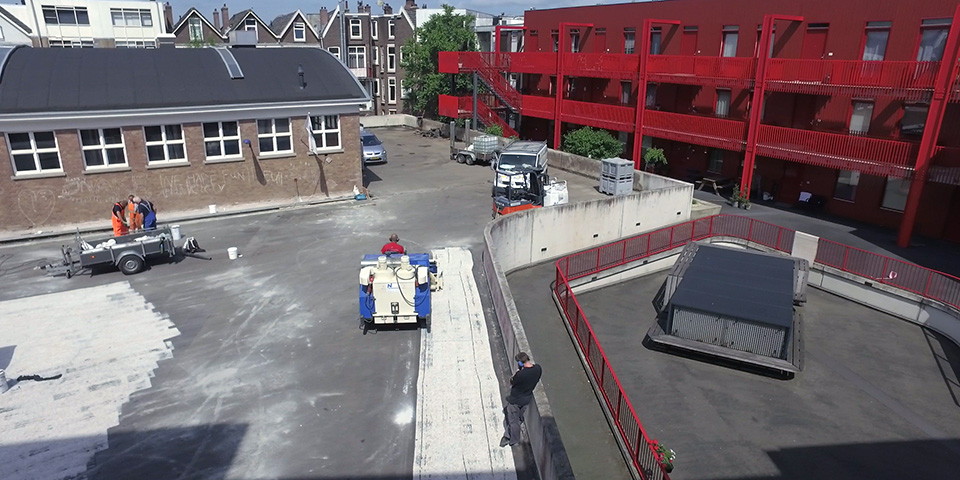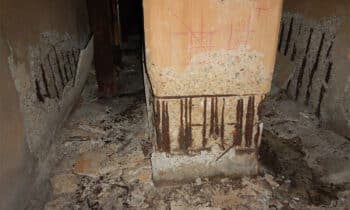
Concrete damage after rain, For when things go wrong
The weather pulls its own plan. Even as contractors pour a vast concrete floor have scheduled, precipitation can throw a spanner in the works from one moment to the next. The schedule gets stuck, the construction process stagnates and the quality of the concrete floor is literally watercolor. In that case, Nieuwenhuis.nl can repair the damage.
The person who knows all about failed concrete floors - especially due to rain - is Herbert Nieuwenhuis of Nieuwenhuis.nl. "Concrete floors are increasingly acting as finishing floors," he says. "That means they have to meet high requirements. For example, they must be smooth and wear-resistant or have a slope. Yet they are poured in an outdoor situation, where conditions are poorly controlled."
Divergent risks
Of course, contractors and concrete suppliers have more and more tools to choose the best conditions. Apps like "shower radar" and "weather" provide increasingly detailed information about upcoming weather conditions. But when rainy periods last too long, contractors still become willing to increase their risk. "And that's where it goes wrong," Nieuwenhuis knows from experience. "Rain periods are a major and costly obstacle to the construction process, especially in the spring and fall."

Concrete floors poured under faulty conditions never reach the required quality.
Uneven surfaces
Concrete floors poured under faulty conditions never reach the required quality. In heavy rain, the floor takes on the appearance of a washed-out gravel floor. The surface is open and uneven, so wear resistance cannot be guaranteed either. If the floor is poured around a steel structure, the consequences are even greater. In this case, drip holes occur at the connection points, posing a risk to the stability of the structure.
Sanding and impregnating
"For rain damage restoration, we offer several solutions," says Nieuwenhuis. "For the lighter damage cases, we sand the top layer of the concrete floor until the floor shows the desired smooth texture. After an impregnation layer, which prevents the concrete floor from continuing to give off dust, the floor is ready for use."
For heavier cases, Nieuwenhuis removes all weak layers to then apply a new industrial leveling layer. Nieuwenhuis: "For large surfaces, this layer has to be pumped. We then ensure that the new layer meets the exact requirements. And of course, this floor can also be impregnated to prevent dust formation."

Ice fast
"Unfortunately, repairing the floor is only part of the problem," says Nieuwenhuis. "The moment our help is called in, the contractor is also stuck with a construction process that is stagnant. Therefore, as a rule, he would rather see us show up yesterday than today. We realize that. That's why things always move quickly with us. We come as quickly as possible. Pumping is generally done in one day; the curing and leveling process takes two to three days. After that, the contractor can move on."




